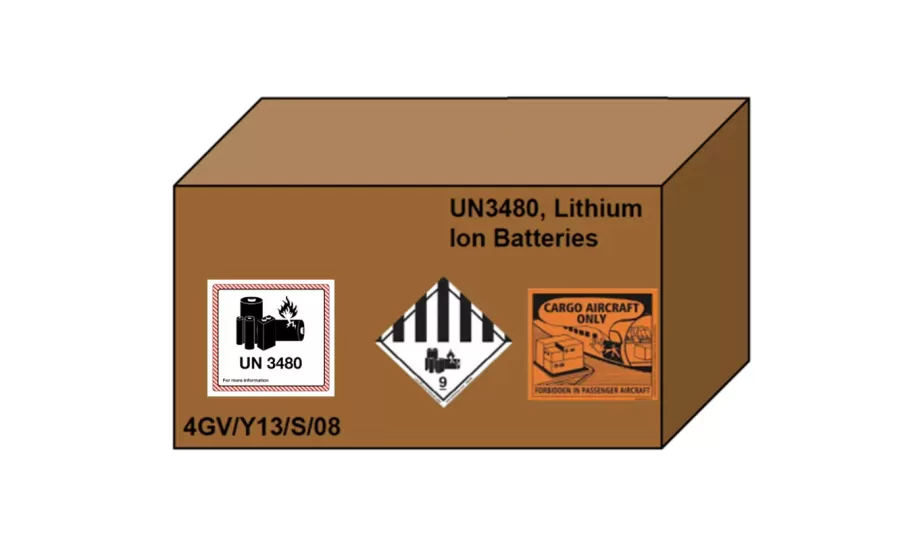Lithium batteries have become an integral part of our lives. They’ve revolutionized the world of electronic devices, offering immense power in a lightweight package. However, their chemistry is considered unstable, which is why they require a battery management system (BMS) to monitor various factors. When it comes to shipping these batteries over long distances, certain precautions need to be taken to ensure their safety and prevent any potential hazards. In this article, we will explore the international regulations for transporting lithium batteries and the importance of strict packaging requirements for battery packs.
International Regulations For Lithium Battery Shipping
International regulations play a crucial role in the transportation of lithium batteries. Most countries have established guidelines and lithium battery safety precautions to ensure the safe transport of these batteries.
Different modes of transportation have their own set of rules and restrictions for lithium battery shipping.
When it comes to air travel, both the United Nations Economic Commission for Europe (UNECE) and the International Air Transport Association (IATA) have established international standards that must be adhered to. These standards classify batteries according to specific UN codes. According to IATA’s Dangerous Goods Regulations (DRG), lithium batteries are classified as Class 9 dangerous goods.
For maritime transportation, the International Maritime Organization (IMO) has developed regulations under the International Maritime Dangerous Goods (IMDG) Code. These guidelines ensure the safe handling and transportation of lithium batteries by sea. Packing must meet Packing Group II performance standards.
Land transportation rules can vary from country to country. In the United States, the U.S. Department of Transportation (DOT) sets regulations for shipping lithium batteries. In Europe, the European Commission (EC) defines its own transport standards. There are multiple rules and regulations to abide by, such as the DOT’s rule that completed packages should not exceed 66 pounds in weight.
It’s also important to note that local and regional carrier companies may have their own rules regarding the transportation of lithium batteries and lithium battery shipping labels. It’s always a good idea to check with these carriers for specific details on their standards.

Why Should Battery Packs Be Packaged With Strict Requirements?
Lithium batteries are categorized as Hazard Class 9: Miscellaneous Hazardous Materials. This classification applies to all lithium batteries being shipped internationally by ground and sea. In some cases, lithium shipments transported by cargo planes may also be classified under Hazard Class 9.
Battery packs are made up of multiple lithium batteries combined together, so they need to be packaged according to strict requirements to prevent any potential hazards. Shock-absorbing materials, such as foam or bubble wrap, must be used to protect the batteries inside the package. In addition, clear instructions on handling and safety precautions should be provided on the packaging.
It’s worth mentioning that not all lithium batteries will be classified as Hazard Class 9. There are certain instances where batteries may fall outside of this classification, such as when lithium metal batteries are packed with or inside equipment and contain less than 2 grams of lithium, or when lithium-ion batteries are packed with or inside equipment and have cells or batteries with specific watt hour limits. In these cases, the batteries may not be subject to the Hazard Class 9 standards.
How Can CMB Ensure Lithium Battery Damage Prevention During Long-Distance Transportation?
CMB complies with the shipping regulations for lithium batteries in different countries. This ensures that all necessary safety measures are taken and that the batteries are transported in accordance with the guidelines set by each country.
CMB understands the safety precautions for lithium batteries during transportation. This includes packing the batteries properly, so they are in compliant UN boxes, and following prescribed labeling procedures to ensure that they are stored separately from flammable materials. Finally, lithium batteries being shipped are packed with pallets to protect the lithium-ion batteries from tread.
To further prevent damage, here are a few tips for handling lithium batteries during long-distance shipments:
- Avoid temperature extremes, including high and low temperatures, as they can lead to battery damage.
- Avoid excessive vibration and shock during transport as this can lead to internal damage.
- Practice proper handling techniques to prevent any potential damage, such as not dropping or crushing the battery.
- Keep batteries in their original packaging to ensure maximum protection.
Choosing the correct way to transport lithium batteries is also crucial. CMB ensures that each battery is transported using the most suitable mode of transportation, taking into consideration factors such as distance, destination, and specific custom requirements. This may include air, sea, or land transportation, depending on the circumstances. Each mode of transportation has its own set of regulations and guidelines that need to be followed to ensure lithium-ion battery safety.
In summary, adhering to lithium battery shipping regulations, following safety precautions, packing lithium batteries correctly, and selecting the appropriate transportation method are all vital for ensuring safe lithium battery shipping. At CM Batteries, we can help you solve these problems directly, as we have extensive experience in battery packaging and shipping solutions. To learn more, click here.



One thought